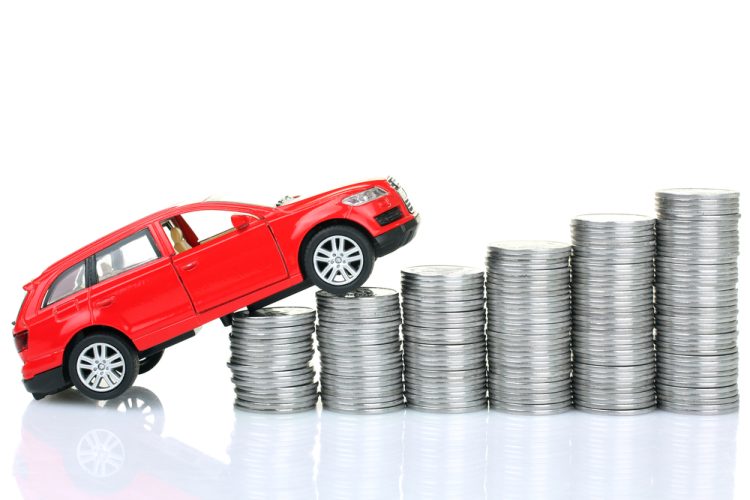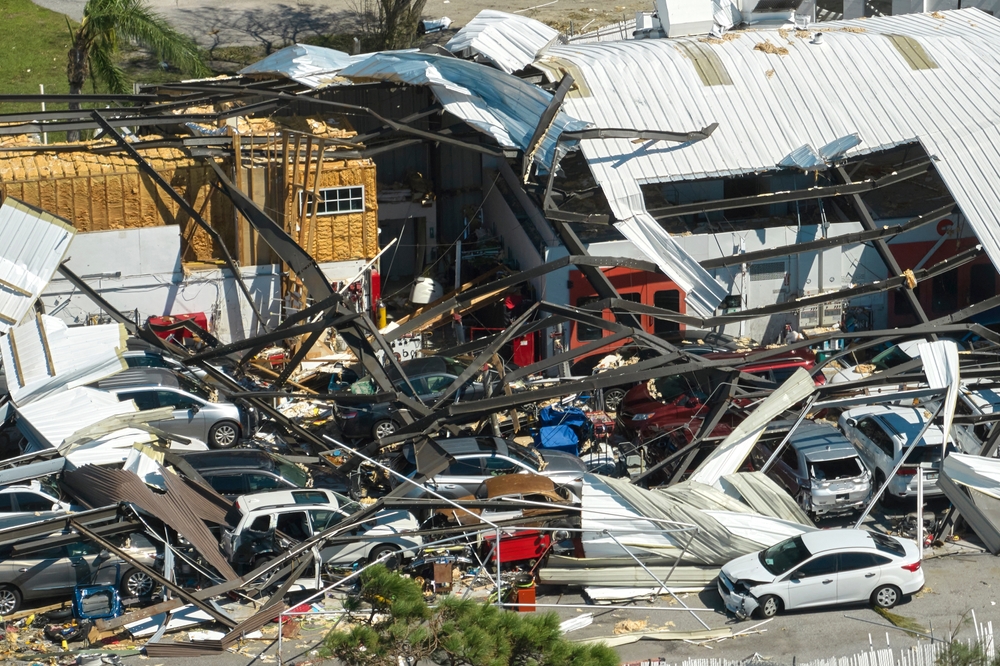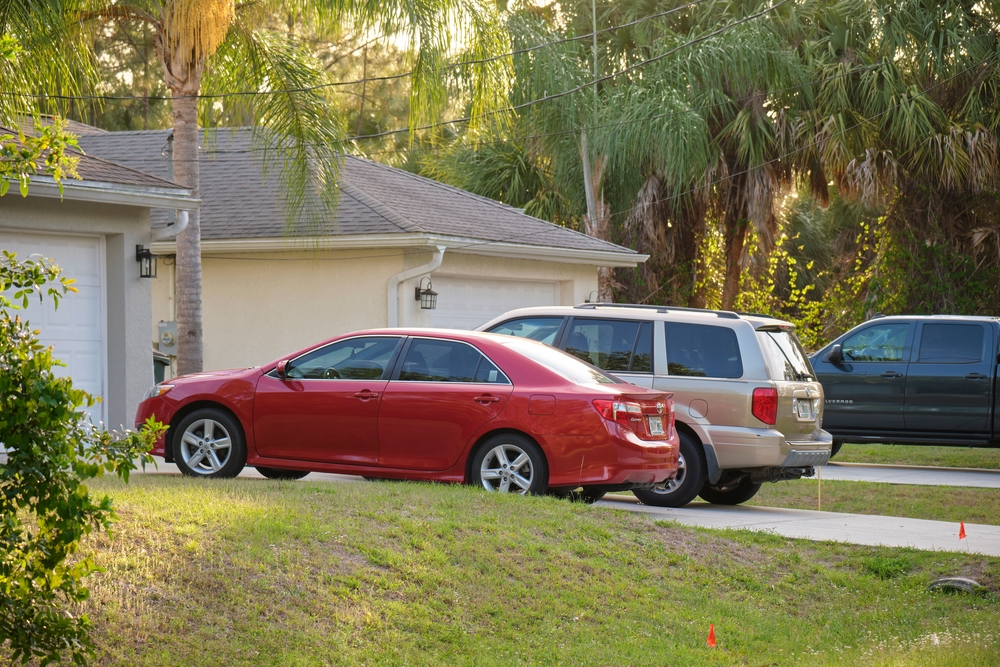
After two years of unusually sharp increases, car insurance looks set for another climb. Taken together, these forces point to modest but persistent premium growth through late 2025 and into 2026—likely in the low‑single digits in most areas, with some states feeling more.
There is one bright spot: the pace of increases has slowed as carriers regain profitability. But ‘slower’ doesn’t mean ‘over.’ Here is what’s driving the market, what it could mean for your bill by yearend, and how insurance brokers can help you find savings even when rates are rising.
As we head into 2026, drivers across the U.S. are bracing for another bump in their car insurance premium. After years of rising repair, labor, and claims costs, the industry predicts premiums will climb in some regions. What’s driving the increase—and how high could it go?
For drivers in the U.S., car insurance premiums continue to climb with little relief in sight. Forecasts for 2026 suggest more increases, though the pace will likely be slower than in recent years. According to the Insurance Information Institute, premiums rose about 15% in 2023 and 10% in 2024, before easing to an average 7% increase in 2025. In 2026, rates are projected to rise again, but by a more modest 4% on average, as insurers stabilize after several years of steep adjustments.
What’s causing rising car insurance costs? And, more importantly, how can your independent insurance agent help you find affordable and reliable coverage? Learn the answers to these questions and how to lower your premium in 2025.
How Much More Will You Really Pay By the End of 2025?
It depends. Currently, the average cost of car insurance in the U.S. is $2,328 for a full coverage policy. A 6% increase would bring that up to $2,467. But there is much more that goes into your insurance bill. Some items include:
- Your specific factors, such as age, gender, location
- The economy, including things like tariffs, effect on car insurance and inflation
- Claims action across the U.S., and specifically in your region
Your unique factors are the basis for your insurance costs, but everybody is the same in wanting to get relief from paying higher bills.
Auto Insurance Premiums in 2026: Slower, But Still Rising
Auto insurance premiums are expected to continue rising in 2026, though increases should be smaller than the sharp hikes of the past two years. A recent outlook from Swiss Re, one of the world’s largest reinsurance companies, projects overall U.S. property and casualty premiums will expand about 4% next year—an indicator that auto insurance will see continued but more modest increases as carriers stabilize.
Several factors are driving the trend. Repair and labor costs remain high, supply chain bottlenecks continue to affect parts pricing, and extreme weather losses add pressure in certain regions. New tariffs are another concern, potentially reversing the temporary rate relief some states saw in early 2025. Government data confirms the strain: the Bureau of Transportation Statistics reports motor-vehicle insurance has been one of the biggest contributors to inflation in 2025, with mid-single-digit increases even as other transportation costs cooled.
There is some good news for drivers. As more customers shop around, insurers are being forced to compete harder on pricing. Since 2021, customer retention has dropped 5%, translating into a 22% jump in policyholders switching carriers, according to the Insurance Information Institute. For 2026, that means comparing quotes—especially with the help of a Freeway Insurance agent—remains one of the most effective ways to find savings, even as premiums continue their upward climb.
State-by-State Variations: Where Drivers Will Pay More for Auto Insurance
State-by-state car insurance costs vary because risks do. Dense traffic and higher medical and legal costs push prices up, as do frequent hail, floods, or wildfires and higher theft or uninsured-motorist rates. Trade policy can also amplify differences—tariffs on imported parts raise repair costs in some regions. Rural, lower-congestion states typically land lower. Those patterns aren’t new—and they’re likely to hold into 2026, even if the exact figures shift.
Some states, like Texas, have already seen enormous auto insurance cost increases with a 15% jump in 2024 and an expected 6% jump by the end of 2025, according to the Houston Chronicle. Other states that might see higher increases (or already are) include:
- Rhode Island — Forecast to have the biggest rate increase by end of 2025: ~20% with tariffs, ~17% without.
- Michigan — Also among the top, projected ~19% increase (with tariffs), ~16% without.
- Washington, D.C., Maine, Delaware, Georgia, Nevada — All among states projected to see double-digit increases.
- California, New Jersey, Washington state — Expected above-average insurance rate hikes in some reports.
- Florida — Expected above-average insurance rate hikes, driven by hurricane exposure and a challenging litigation environment.
Bottom line: location sets the baseline. Local repair costs, medical and legal environments, weather exposure, theft, and parts pricing tilt the curve—so some states move faster than others. Next, we’ll break down why premiums are rising and what you can do to blunt the impact.
Why Car Insurance Premiums Are Rising in 2026
Think of your premium as a reflection of what it costs to put a damaged vehicle back on the road. When repair parts, labor, medical care, and legal settlements get pricier—or when big storms hit—insurers pay more per claim. Spread across millions of policies, those higher claim costs show up as rate changes.
Vehicle insurance premiums are set to rise again in 2026, continuing a trend fueled by higher repair costs, inflation, tariffs effect auto parts and repairs and more frequent claims. Severe weather, supply chain issues, and state-specific factors also play a role. While we’re not expecting widespread increases to minimum liability requirements – the kind of regulatory shift that lifted California’s rates last year, understanding what’s driving increases can help drivers prepare for potential sticker shock. Here are the key factors shaping rates in 2025–2026.
Inflation, Repair Costs and Tariffs
Vehicle repair costs have surged in recent years, and tariffs on imported auto parts could make things worse in 2026. With modern cars packed with advanced technology like sensors, cameras, and safety systems, even minor fender-benders can be expensive to fix. The automotive repair workforce has slimmed considerably, leading to a loss in revenue for repair shops and dealerships.
Insurers pay more for service and repairs, as well as for the rising cost of parts, which leads to higher prices. When carriers must cover pricier claims, they adjust rates, accordingly, passing those expenses to drivers. If tariffs remain in place—or expand—states reliant on imported parts could see even sharper increases than the national average.
Rising Accident Claims
Americans are driving more and that will continue to increase, according to a study by the Federal Highway Administration. The more people drive, the greater the likelihood of accidents—and higher claim frequency inevitably pushes rates upward. Urban centers with dense traffic and longer commute times often have higher accident rates, which insurers must factor into pricing. Congestion increases the chances of collisions, while distracted driving remains a persistent issue across the country.
States with growing populations or rapidly expanding cities are particularly vulnerable to these trends. Even minor accidents, if there are enough of them, means insurers raise premiums to maintain profitability and cover rising payouts.
Increased Medical and Liability Expenses
Medical costs continue to rise, and that directly impacts auto insurance claims. When drivers or passengers are injured in accidents, insurers must cover hospital bills, rehabilitation, and sometimes long-term care. As healthcare expenses climb, so do claim payouts. In addition, liability costs—covering damages when a driver is at fault—have increased due to larger jury awards and settlements in personal injury cases.
These so-called nuclear verdicts have already impacted the insurance industry and will continue to do so. States with higher healthcare costs or more litigation-heavy environments are particularly vulnerable to sharper increases.

Severe Weather and Natural Disasters
Hardly a day goes by without news of a severe weather event or natural disaster dominating the headlines. Weather events have grown more destructive and frequent, affecting drivers in many states.
Hurricanes, floods, hailstorms, and wildfires cause billions in vehicle damage every year. Insurers calculate risk based on regional exposure, so states with higher natural disaster frequency face larger premium hikes. For example, flood-prone coastal areas and hail-heavy regions like the Midwest can expect above-average increases.
As climate change increases, the trend is likely to continue. Even drivers who haven’t personally filed weather-related claims may see higher costs because insurers spread the risk across entire regions.
Fraud, Theft and Uninsured Drivers
That shiny new Camaro in your driveway? If it’s on the list for top 10 stolen vehicles, you will likely pay more in insurance. According to the Insurance Institute for Highway Safety (IIHS), Camaros “raced” to the top of the list in late 2025.
Insurance fraud and high theft rates are major reasons for price hikes. In states with elevated vehicle theft, like California, Texas and Florida, insurers must account for those risks when pricing policies. Similarly, high numbers of uninsured or underinsured drivers create additional costs for companies, as insured motorists’ policies often absorb those expenses in accidents.
Fraudulent claims, such as staged collisions or inflated repair bills, also drain billions from insurers each year. These risks vary by state, meaning some regions bear disproportionately higher costs, which translates into steeper premium increases for residents.
Which Drivers Will Feel the Biggest Impact?
Not all drivers will experience rate hikes equally. Those living in high-risk states, especially areas prone to severe weather or theft, may see the sharpest increases. Younger drivers, motorists with recent accidents or violations (high-risk drivers), and owners of newer vehicles with expensive technology are also more vulnerable to higher premiums.
Urban drivers often face steeper costs due to congestion and accident frequency, while rural drivers may be less affected. Additionally, households with multiple vehicles or drivers carrying only minimum coverage could feel budget pressures more quickly as premiums rise.
Where you live and how you’re rated matter most. Keep reading to discover who will see the biggest impacts.
High-Risk Drivers
High-risk drivers, including those with convictions for a DUI or driving without insurance (DWI), past accidents, and similar violations, are likely to feel the sharpest premium increase in 2026. Insurers use risk profiles to set rates, and individuals with a history of claims or unsafe driving habits are viewed as costlier to insure. Even small violations, like speeding tickets, can trigger significant jumps in premiums.
Younger drivers, like teens, are considered high risk because as a collective group, they file more claims than any other demographic. There is no driving history for insurers to rely on as a predictive model for future behavior. Parents of these new drivers may be left wondering if cheap car insurance for young drivers exists.
Drivers With Older Vehicles
Owning an older car doesn’t necessarily protect drivers from rising insurance costs. While collision and comprehensive coverage may be cheaper, older vehicles are often more vulnerable to costly repairs, especially if replacement parts are hard to find. An older car may even be a liability, since it does not have the latest safety features.
Drivers may face tough decisions about what coverages to include in 2026. Keep in mind there are different combinations that may make more sense for you – your Freeway Insurance agent will help you run the numbers.
Regional Differences in Premium Increases
Car insurance rates vary widely across the U.S., and 2026 will likely magnify those differences. States prone to severe weather events—such as hurricanes, floods, or hailstorms—often see higher premiums due to frequent claims. Regions with dense traffic, high theft rates, or larger populations of uninsured drivers also face steeper hikes. Conversely, rural areas with fewer accidents and less congestion may experience smaller increases.
State regulations play a major role too, with local laws and oversight shaping how and when insurers adjust rates. As a result, where a driver lives is still one of the strongest predictors of their insurance costs.
How to Minimize the Impact of Rising Vehicle Insurance Premiums
Even when rates trend up, you still have levers. Shopping ahead of renewal is the most effective, because every carrier price risk differently. An independent agency like Freeway Insurance can compare multiple companies at once and surface options you might not see on your own, especially if a new filing in your state has created fresh discounts.
Next, make sure your coverages match your current life. If your car’s value has dropped, talk with your agent about the trade-offs on comprehensive and collision. And if you’ve added safety features or cut annual mileage, those details can help you qualify for better pricing.
Your policy design and driving behavior matter, too. Raising a deductible can trim the bill—so long as you keep an emergency cushion—and enrolling in a telematics/safe-driver program can lower costs now and over time. If you own a home or insure more than one vehicle, bundling can also reduce the combined premium.
Budgets are tight for many families right now, which makes every dollar count. Here’s where to focus next:
Compare and Shop Quotes with Freeway Insurance
Drivers just like you have made their voices clear to the insurance industry in the recent past – being more likely to shop and compare car insurance rates and even switch insurers completely. Go you! But it really is that simple. Your Freeway Insurance agent is a wizard at finding out what you need and how much you want to pay and then scouring carriers to offer customized options that meet your goals.
This type of research would take you hours. Find out why your neighbors are using Freeway to find their perfect package.

Bundle Your Policies for Car Insurance Discounts
Most people know you can save serious money by bundling policies together under one roof. Insurers spend time and money competing for your dollars – when you tell them you trust them enough to carry more than one of your policies, it tells them you are worth hanging onto.
Depending on the insurance carrier and your qualifications, you can earn a discount anywhere from 20%-30% for bundling your home and auto policies.
Take Advantage of Safe Driving Rewards
Besides bundling, the highest level of discount is saved for drivers who have shown they drive safely, obeying the laws and avoiding trouble. Sometimes called a Safe Driver Discount, sometimes known as a Good Driver Discount, you can see up to 30% off by having a good driving record for the last 3-5 years.
Spotty record? Not to worry. At Freeway, we have years of experience helping drivers with less than stellar driving records find affordable insurance. And meanwhile, you can concentrate on getting a good three years of safe driving under your belt and aspire to a Good Driver Discount.
Understanding the Factors That Affect Your Auto Insurance Rate
You are unique. Even if your twin brother or sister lives right next door, you are still unique. In the eyes of an insurance underwriter (the person who comes up with those insurance quotes), there are a multitude of things about you that drive your specific quote.
Driving Record and Claims History
Your driving record and claims history are arguably the two most important factors a potential insurer will consider. As mentioned, those with a spotless record and no claims receive the best prices.
However, just because you have a blip on your record or you file a claim once, you can still find cheap car insurance. Freeway independent agents are experts at producing competitive prices. Put enough time behind you and those things will drop off your record.
Vehicle Type and Safety Features
The kind of car you drive plays a big role in what you’ll pay for insurance. A sleek sports car usually costs more to cover than a family sedan, simply because it’s riskier and pricier to repair. On the flip side, cars with advanced safety features—like automatic braking, lane-assistance, or a strong crash-test record—can actually help lower your premium. Insurers love anything that reduces the chance of an accident or limits injuries. So, when you’re shopping for a new ride, keep in mind that the safety tech you choose could save you money long after you leave the dealership.
See How Freeway Insurance Can Help You Save Despite Rising Premiums
A quick conversation with a Freeway Insurance agent can benchmark your rate across carriers and flag discounts you may be missing—before your next renewal arrives.
If current forecasts hold, most drivers will see another increase towards end of 2025 and into 2026; generally, around 4%–7%, with higher pressure in severe-weather or theft-prone states
There are still ways to ease the hit. Bundle policies, enroll in safe driver programs and comparing quotes to find the right price and coverage for your budget. Freeway has helped drivers save for years with practical advice and bilingual, experienced agents who make the process simple.
Get a fast and free auto coverage quote online, give us a call at (800) 777-5620 or stop by one of our convenient locations for an in-person chat.
FAQs
Rising car insurance costs are continuing to affect drivers. You have questions about that and how to minimize the impact. Here are some common questions and answers.
Do Safe Drivers Also See Insurance Price Increases?
Unfortunately, yes. Even drivers with spotless records can see their prices rise because insurers adjust rates based on overall risk and costs, not just individual behavior. Factors like higher repair bills, medical expenses, extreme weather, and regional claim trends affect everyone.
While safe drivers may still pay less than high-risk motorists, they aren’t completely shielded from industry-wide increases. The good news is that Freeway can help you find safe driver discounts or rewards programs, which can help offset part of the jump and keep premiums more manageable.
How Does Bundling Auto and Home Insurance Help?
Bundling your auto and home insurance with the same company can save you money and simplify your life. Insurers often reward loyalty by offering car insurance discounts—sometimes up to 20%—when you combine policies. Beyond the savings, bundling also means one bill, one point of contact, and fewer coverage gaps. Some companies even let you add renters or life insurance into the bundle for extra perks. While it’s not always the cheapest option in every case, bundling is worth exploring when shopping for quotes, especially if you’re looking for both convenience and cost savings.
Should I Shop Around for a New Car Insurance Policy Now?
Yes, it’s a smart move. With premiums climbing nationwide, comparing quotes from multiple insurers can help you avoid overpaying. Rates can vary widely depending on your location, driving history, and vehicle type, so shopping around ensures you find the best fit.
Even if you’re happy with your current provider, requesting updated quotes every year or two can uncover savings or better coverage options. Many drivers also find more discounts—like bundling home and auto, low-mileage programs, or safe-driver rewards—that reduce costs. Acting now can lock in better rates before further increases hit in 2026.
Will Premium Increases Affect All Drivers Equally?
Not quite. While nearly every driver will feel some impact, the size of the increase depends on several factors affecting car insurance. Location plays a big role—states facing higher accident rates, severe weather, or theft often see steeper hikes. Individual profiles matter too: younger drivers, those with recent violations, or motorists in high-risk categories typically face larger jumps. Even safe drivers and long-time policyholders may see increases, but often at a slower pace.
In short, the rising tide affects everyone, but how much your premium goes up depends heavily on your circumstances.
Why is My Premium Going Up if I Haven’t Had a Claim?
Insurers price for overall claim costs in your area—not just your history. Higher repair bills, medical expenses, legal awards, theft, and storm losses raise the average cost per claim, which flows through to rates.
Will Tariffs Make Car Insurance More Expensive?
Tariffs on imported parts raise repair costs. If they persist or expand, insurers may reflect those costs in future filings—especially in states more reliant on imported parts.



